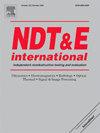推进无损混凝土抗压强度估计:大规模数据集和机器学习框架
IF 4.5
2区 材料科学
Q1 MATERIALS SCIENCE, CHARACTERIZATION & TESTING
引用次数: 0
摘要
无损检测(NDT)方法提供了对现浇混凝土结构抗压强度的间接评估。虽然传统的静态模型有效地捕获了小规模局部数据集的行为,但当应用于更大的聚合数据集时,其准确性会降低,其中无损检测测量的可变性增加了预测混凝土抗压强度的不确定性。本文介绍了三个详尽的、迄今为止最大的无损检测数据库,包括超声脉冲速度(UPV)、反弹锤(RH)和SonReb方法,包括来自115项研究的16,531个测试结果。首先,根据全球数据集趋势对现有经验模型进行评估。新的关系适合于反映每个无损检测方法的全局行为,突出了它们在捕获大规模变异性方面的固有局限性。然后介绍了一个全面的三阶段机器学习(ML)程序,研究具有不同缺失数据水平的不完整特征对模型性能的影响。第一阶段包括七个不同的ML模型,而第二阶段评估不同的插入策略。第3阶段将顶级性能与树结构Parzen估计器(TPE)优化算法集成在一起,以优化超参数并最大化性能。在所有阶段中,由于数据库中包含的分类变量的比例很高,CatBoost回归成为最稳健的预测模型。TPE-CatBoost模型对UPV、RH和SonReb的最终R2值分别为0.928、0.896和0.947。最后,在云服务器(https://recreate-ndt.onrender.com/)上部署了一个基于django的web应用程序,允许从业者为新的无损检测结果生成实时抗压强度预测。这些新颖的数据集和机器学习工具可以通过更先进的数据驱动建模来推动未来的创新。本文章由计算机程序翻译,如有差异,请以英文原文为准。
Advancing non-destructive concrete compressive strength estimation: Large-Scale datasets and machine learning framework
Non-destructive test (NDT) methods provide an indirect assessment of the compressive strength of in-situ concrete structures. While traditional static models effectively capture the behaviour of small-scale localised datasets, their accuracy diminishes when applied to larger, aggregated datasets, where increased variability in NDT measurements introduces greater uncertainty in predicting concrete compressive strength. This paper presents three exhaustive, largest-to-date NDT databases on the ultrasonic pulse velocity (UPV), rebound hammer (RH), and SonReb methods, comprising 16,531 test results from 115 studies. First, existing empirical models are evaluated against global dataset trends. New relationships are fitted to reflect the global behaviour of each NDT method, highlighting their innate limitations in capturing large-scale variability. A comprehensive three-phase machine learning (ML) program is then introduced, studying the effects of incomplete features with varying levels of missing data on model performance. Seven diverse ML models are included in Phase 1, while Phase 2 assesses different imputation strategies. Phase 3 integrates the top-performers with a Tree-Structured Parzen estimator (TPE) optimisation algorithm to refine hyperparameters and maximise performance. Across all phases, CatBoost regression emerged as the most robust predictive model due to the high proportion of categorical variables included within the databases. The TPE-CatBoost models achieved final R2 values of 0.928, 0.896, and 0.947 for UPV, RH, and SonReb, respectively. Finally, a Django-based web application was deployed on a cloud server (https://recreate-ndt.onrender.com/), allowing practitioners to generate real-time compressive strength predictions for new NDT results. These novel datasets and ML tools can power future innovation through more advanced data-driven modelling.
求助全文
通过发布文献求助,成功后即可免费获取论文全文。
去求助
来源期刊

Ndt & E International
工程技术-材料科学:表征与测试
CiteScore
7.20
自引率
9.50%
发文量
121
审稿时长
55 days
期刊介绍:
NDT&E international publishes peer-reviewed results of original research and development in all categories of the fields of nondestructive testing and evaluation including ultrasonics, electromagnetics, radiography, optical and thermal methods. In addition to traditional NDE topics, the emerging technology area of inspection of civil structures and materials is also emphasized. The journal publishes original papers on research and development of new inspection techniques and methods, as well as on novel and innovative applications of established methods. Papers on NDE sensors and their applications both for inspection and process control, as well as papers describing novel NDE systems for structural health monitoring and their performance in industrial settings are also considered. Other regular features include international news, new equipment and a calendar of forthcoming worldwide meetings. This journal is listed in Current Contents.
 求助内容:
求助内容: 应助结果提醒方式:
应助结果提醒方式:


